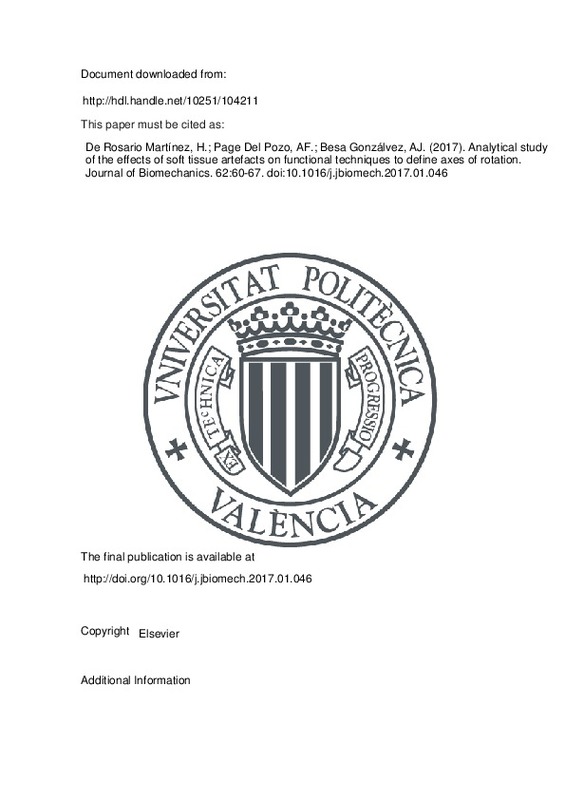JavaScript is disabled for your browser. Some features of this site may not work without it.
Buscar en RiuNet
Listar
Mi cuenta
Estadísticas
Ayuda RiuNet
Admin. UPV
Analytical study of the effects of soft tissue artefacts on functional techniques to define axes of rotation
Mostrar el registro completo del ítem
De Rosario Martínez, H.; Page Del Pozo, AF.; Besa Gonzálvez, AJ. (2017). Analytical study of the effects of soft tissue artefacts on functional techniques to define axes of rotation. Journal of Biomechanics. 62:60-67. https://doi.org/10.1016/j.jbiomech.2017.01.046
Por favor, use este identificador para citar o enlazar este ítem: http://hdl.handle.net/10251/104211
Ficheros en el ítem
Metadatos del ítem
| Título: | Analytical study of the effects of soft tissue artefacts on functional techniques to define axes of rotation | |||
| Autor: | De Rosario Martínez, Helios | |||
| Entidad UPV: |
|
|||
| Fecha difusión: |
|
|||
| Resumen: |
[EN] The accurate location of the main axes of rotation (AoR) is a crucial step in many applications of human movement analysis. There are different formal methods to determine the direction and position of the AoR, whose ...[+]
|
|||
| Palabras clave: |
|
|||
| Derechos de uso: | Reconocimiento - No comercial - Sin obra derivada (by-nc-nd) | |||
| Fuente: |
|
|||
| DOI: |
|
|||
| Editorial: |
|
|||
| Versión del editor: | http://doi.org/10.1016/j.jbiomech.2017.01.046 | |||
| Código del Proyecto: |
|
|||
| Agradecimientos: |
This work was funded by the Spanish Government and co-financed by EU FEDER funds (Grant DPI2013-44227-R). We would like to thank Prof. Tung-Wu Lu, Tsung-Yuan Tsai, Mei-Ying Kuo and Horn-Chaung Hsu from National Taiwan ...[+]
|
|||
| Tipo: |
|







![[Cerrado]](/themes/UPV/images/candado.png)


